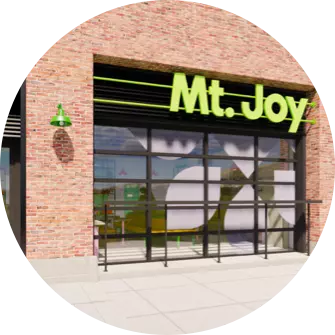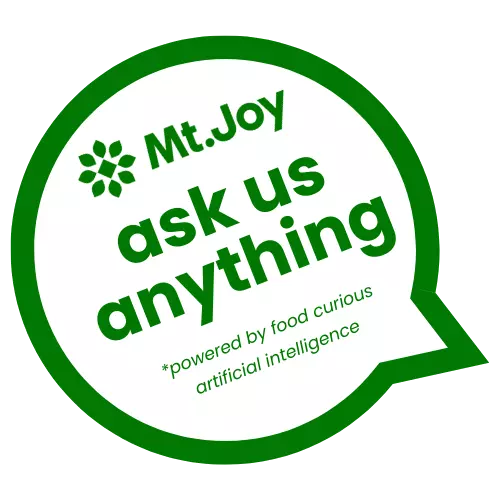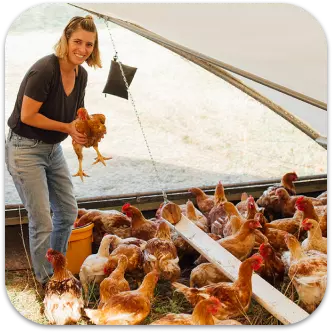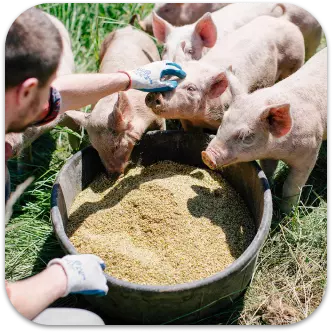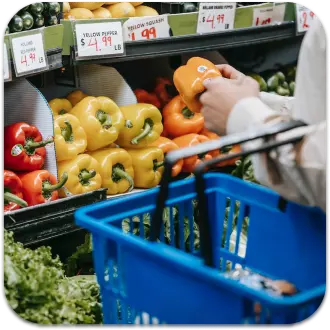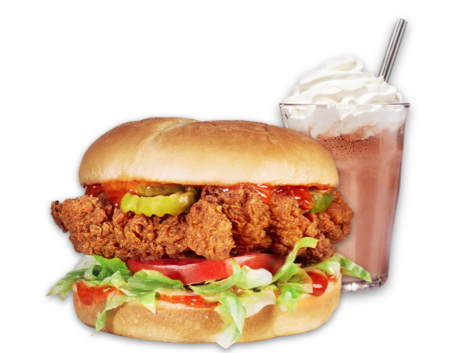
The Beginners Guide to Regenerative Agriculture
It's the buzzword of the year. But it's not easy to understand. Here's a simple explanation of this complex topic.
Given the choice, most people would say they want to inhabit this earth as a good steward. We recycle, we compost, we’re buying electric cars, and we believe the children are our future. This look forward to a better way of being? This is the heart of regenerative agriculture.
Grant Jones runs a chicken farm called Hungry Hollow Farms in Shelton, WA. “I came to regenerative farming through an animal welfare lens,” says Jones. “If we started farming today, would our approach be to take a bird and breed it to grow as fast as possible and cram them inside of a dark shed? Is that how we would raise our food? No.”
Photo by Tim Hüfner
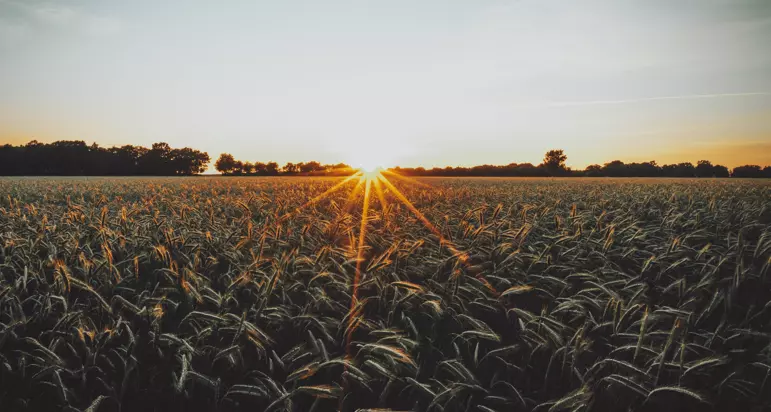
What is regenerative agriculture?
Regenerative is focused on actually improving soil conditions.
By definition, to sustain is to keep something going for a long period of time without interruption. Farmers are moving away from the idea of simply “sustaining” practices into creating systems that are regenerative.
A set of agricultural practices introduced in the 70s, regenerative agriculture has become more popular in recent years. Regenerative farms combine practices such as minimizing tillage from tractors and heavy machinery, planting cover crops, rotating through diverse plant
families, and integrating livestock into the ecosystem. It’s not just reducing impact and sustaining, it’s about renewing, reinvigorating, and regenerating the land.
Regenerative agriculture and sustainable farming are closely related, as are other less popular terms for approaches to farming, like “conservation agriculture” or “agro-ecology”. And while sustainable food systems were all the rage several years ago, today it is generally accepted that sustainable farming isn’t enough to improve conditions.
What is regenerative agriculture important?
Plants & Animals
“There's this big disconnect between how our food is produced and how people think it's being produced,” says Jones. You need only look at food packaging to understand food brands are appealing to our sense of a dreamy farm-scape. One with green grass and red barns, “but the reality is almost never that,” says Jones. At its core, a farm implementing regenerative agriculture is one that will have a rich and active ecosystem including trees, crops, animals, healthy water systems, and more. Regenerative farms are the farms we picture in our head — with plants and animals together.
Loyal to Soil
The earth’s topsoil is in crisis. Trees, food, water — all of these systems are immediately impacted by topsoil, globally. No topsoil? No food. No trees? No bird habitat. You see where this is going, yes? It’s stress inducing, but regenerative agriculture can feel like a soothing antidote.
“That's a whole lot of carbon that's in our atmosphere that was once in our soils,” says Jones. “And that's a lot of degraded soils that have way less water holding capacity.” This loss of organic matter can lead to soil erosion,
reduced fertility, and other environmental problems. Regenerative farming can help to rebuild organic matter levels in agricultural soils.
Animal & People Welfare
Transparency in farming is a guiding light. If a farm allows visitors to see how they’re raising food and animals, that’s a pretty good sign they’re proud of their work. Factory farms, on the other hand, do not give public tours.
It’s been well established that commercial meat production is problematic. That $4.99 Costco chicken? In 2022, Costco was sued for animal mistreatment. Regenerative agriculture focuses on a healthy ecosystem for animals, raising them on pasture instead of inside commercial buildings.
Not only do animals benefit from natural light and healthy diets, workers do, too. Chicken farming is a notoriously degrading arrangement between food companies and farmers, where the farmers own all of the liabilities, but none of the assets of the operations,” says Jones. On a regenerative farm, workers get to be outside, and breath fresh air. “You can go home feeling good about your work, and that’s a major takeaway.” says Jones.
What are the benefits of regenerative agriculture?
Regenerative agriculture has been shown to improve soil health, increase biodiversity, improve water quality, and increase resilience to climate change. This can also benefit local communities by improving water quality and reducing the risk of flooding.
Regenerative farming has also been shown to reduce greenhouse emissions when compared with conventional farming practices. Conventional agriculture contributes up to 25% of the emissions driving the climate crisis. The results are so impactful, that big brands like Patagonia have signed on to support regenerative agriculture. “Growing food and fiber with industrial techniques has devastated our climate,” says Patagonia .
How is regenerative agriculture different from sustainable and organic agriculture?
Feeling confused as a consumer? Relatable.
Here’s the thing, regenerative agriculture is a trending methodology. Before this, it was called “conservative agriculture”. It’s also called “agroecology”. Farmer Grant Jones describes these farming practices as “having a strong venn diagram overlap, but different in terms of what motivates them.” Ok, so…..what?
While sustainable agriculture aims to maintain the status quo of agricultural practices, regenerative agriculture seeks to restore and enhance the natural resources and ecosystem services of the land. Regenerative agriculture is more holistic and focuses on improving soil health, biodiversity, and ecosystem services.
Organic farming is a bit more controversial, especially in the farming community. The “organic” label doesn’t mean that food is grown chemical-free, on open land with amber waves of grain. Pesticides, insecticides, and other chemical inputs can still be used.
“It’s a step in the right direction, but likely not ambitious enough for us to go where we need to go,” says Brian Shaw of Metabolic, a business working to transition the global economy to a fundamentally sustainable state. “Something can be certified organic but still be traveling thousands of kilometers, for instance. Everything being produced organically might not be sufficient to bring us to the state of nature that we need. We need to think about more complex systems, not just reducing pesticides, but moving more into a polyculture system — managing things in a more regenerative way.”
Photo by zoe-schaeffer
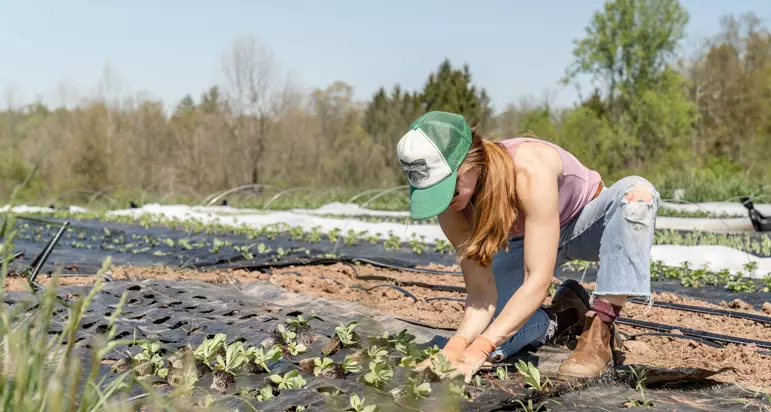
Is regenerative agriculture a healthier choice?
Short answer, yes.
A preliminary study from David Montgomery and Anne Biklé, co-authors of What Your Food Ate, found that food grown under regenerative practices contained, on average, more magnesium, calcium, potassium and zinc; more vitamins, including B1, B12, C, E and K than food grown on conventional farms. The study also
notes the benefit of regenerative agriculture for meat production — “a comparison of the unsaturated fatty acid profile of beef and pork raised on one of the regenerative farms to a regional health-promoting brand and conventional meat from local supermarkets, found higher levels of omega-3 fats and a more health-beneficial ratio of omega-6 to omega-3 fats.”
Tips for shopping
Consumers can support regenerative agriculture by buying products from farmers who practice regenerative agriculture, supporting local farmers markets, and advocating for policies that support sustainable and regenerative agriculture. In Washington State, ag partners from each region have worked together to build one online farm-finding tool. It’s amazing!
The Washington Food and Farm Finder allows users to enter “regenerative” as a keyword (or any keyword really - apples, chickens, etc.) to learn where farms are using regenerative farming to produce local food. There are many that offer online orders, as well.
Key takeaways to remember about regenrative agriculture
Farming in a way that replenishes the earth is necessary for the health of our bodies and our planet. Things can’t stay the same — we all know this. Here, we recap some takeaways on regenerative agriculture:
- Is a healthy choice for you, your family, and the earth. Regenerative ag takes into account all environments and works to build a regenerative ecosystem that benefits all.
- Seek out local food sources, and understand where your food is coming from. Food system transparency is a guiding light! If farms allow you to visit, that’s a good sign.
- Soil health is important. While you likely don’t think about soil day over day, it impacts your daily life. “The average depth of top soils is now about half of what it was in pre-colonial times,” says Jones. You may remember a little historical event called the “dust bowl” where the drought-stricken southern plains region suffered severe dust storms during a drought in the 1930s. This all happened because farmers plowed up acres and acres of natural grassland to plant wheat and corn. And then a drought came. And then the winds started. That drought killed people, livestock, and impacted crop production for the entire region ultimately forcing farmers to migrate in search of work and better conditions.
- Regenerative agriculture focuses on animal welfare. Raised on open pasture and rotated across a farm’s ecosystem, animals are raised in a way that we inherently think they should be. Farmers minimize animal stress, discomfort, and pain across an animal’s lifetime, monitoring their daily activities to meet land resource and crop objectives.
MT JOY
We want to leave this earth better than we found it, improving conditions as we move through life. This is the most important philosophy we want to shine through all of our work here at Mt. Joy, and the motivation for sharing information such as this.
We are committed to building a supply chain that works for all stakeholders; we want to make sure chicken isn’t being compromised by poor genetics and a life of confinement; we want to make sure that the farm worker isn’t being compromised through poor working conditions; we want to make sure that communities aren’t compromised through air quality issues; and we want to make sure that you — the “consumer: — are eating the best, most healthy food possible.

